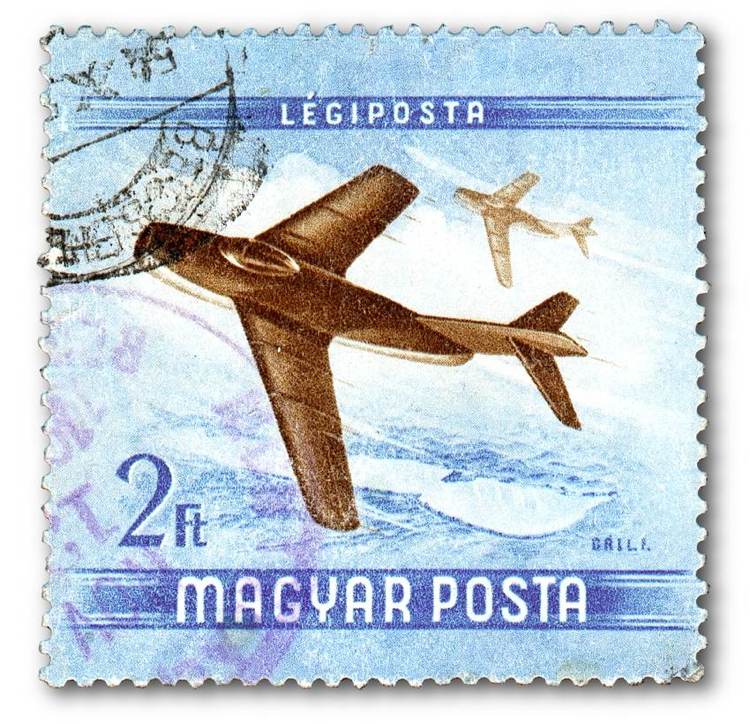Hungarian stamp features MiG-15 jet fighter
A stamp issued by Hungary in 1954 features the Russian MiG-15 jet fighter. Today, the stamp is readily available in mint condition and as a “CTO”1, but copies in postally used condition are very hard to find. The stamp shown below is the only postally used copy I have seen in a lifetime of collecting:

Rare, but not so valuable
Although a collector might never find another used copy of this stamp, my copy (or any used copy for that matter) can’t be considered to be valuable, although some collectors might sell their first child to obtain one; in the world of philately, one man’s trash can truly be another man’s treasure.
The value of any given stamp doesn’t depend on its rarity, or its age, or even its condition. The one-of-a-kind British Guiana 1-cent magenta stamp, which sold in June, 2014 for U.S. $9.5 million, is crudely designed, faded, damaged, and dirty. depends on not only on its rarity, but also on its desirability. Hungary is not a very popular country among philatelists: long ago the country lost credibility among collectors because of its practice of issuing thousands of different stamps and flooding the philatelic marketplace with millions of CTO copies of those stamps.
In addition, Hungary, along with the Soviet Union and other former Communist Bloc countries, didn’t allow the sale of their pictorial and commemorative stamps as postage for domestic or international use. Instead, their mint stamps were considered to be export goods to shore up their GNP.
Another problem is Hungary became the source of reprints of common stamps from other countries. Japanese stamps issued after the Second World War were reprinted in Hungary from the original printing plates; they are still commonly available, and have no commercial value (except for the paper fibre they contain).
-
“CTO” means “Canceled-To-Order”. Stamps are “canceled to order,” usually in full sheets, by many governments. The cancels may be printed on the stamps at the same time that the stamp design is printed. normally, one circular “cancellation” is printed at the intersection of four stamps so that each of stamps ends up with one-quarter of the “cancellation” in a corner. A stamp with a cancel and with full gum is likely a CTO stamp, as CTOs do not see actual postal use.
CTO stamps are sold to stamp dealers at large discounts from face value. Most catalogues say whether they price CTO stamps or postally used stamps. Although most CTOs have little commercial value, some stamps are hard to find in postally used condition, and are expensive in mint condition; as a result, many collectors choose purchase CTOs rather than have no examples of those stamps in their collections. ↩︎